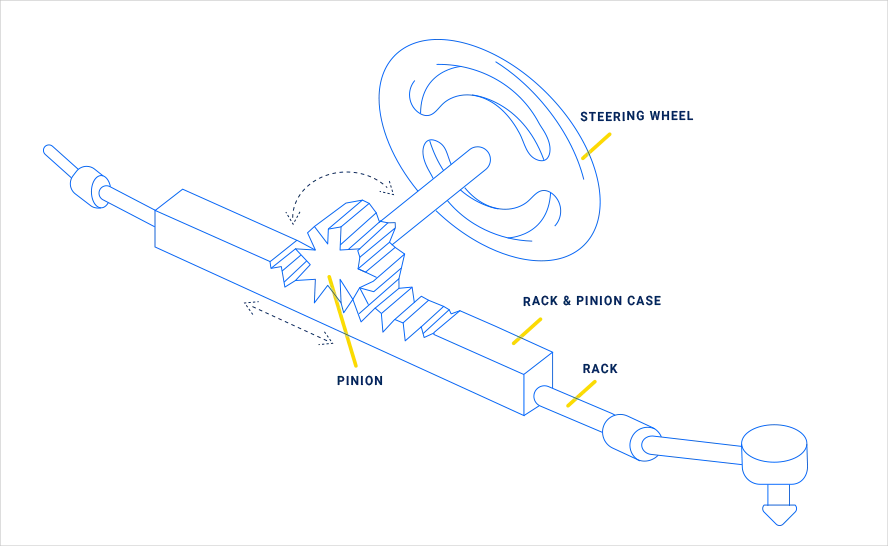How does a car’s steering system work?


The car steering system is a crucial component that allows drivers to control the direction of their vehicles. It is responsible for turning the wheels and ensuring a smooth and responsive driving experience. In this article, we will explore how a car’s steering system works, including its various components and mechanisms.
Understanding the Basics
At its core, the car steering system is designed to convert the rotational motion of the steering wheel into the linear motion required to turn the wheels. This process involves several key components working together seamlessly.
Steering Wheel and Column
The steering wheel is the primary interface between the driver and the steering system. It is connected to the steering column, which houses various mechanisms that transmit the driver’s input to the wheels. The steering column also provides support and flexibility, allowing for adjustments in height and tilt.
Steering Gear
The steering gear is responsible for converting the rotational motion of the steering wheel into the linear motion required to turn the wheels. There are different types of steering gears used in cars, with the rack and pinion system being the most common.
The Rack and Pinion System
The rack and pinion system is widely used in modern cars due to its simplicity and efficiency. It consists of a rack, which is a toothed bar, and a pinion gear. When the driver turns the steering wheel, the pinion gear engages with the rack, causing it to move either left or right. This motion is then transmitted to the wheels, resulting in a change in direction.
Power Steering
Power steering is a feature that assists the driver in turning the wheels, especially at low speeds or when parking. It uses hydraulic or electric systems to reduce the effort required to steer the vehicle. In hydraulic power steering, a pump pressurizes the steering fluid, which then assists in turning the wheels. Electric power steering, on the other hand, uses an electric motor to provide the necessary assistance.
Steering Linkage
The steering linkage connects the steering gear to the wheels, transmitting the motion and ensuring proper alignment. It consists of various components, including tie rods, pitman arms, and idler arms. These components work together to ensure that the wheels turn in sync and respond accurately to the driver’s input.
Tie Rods
Tie rods are crucial components of the steering linkage, connecting the steering gear to the steering knuckles. They are responsible for transmitting the motion from the steering gear to the wheels, allowing for precise control and alignment.
Pitman Arm and Idler Arm
The pitman arm is connected to the steering gear and transfers the motion to the steering linkage. It is connected to the idler arm, which acts as a pivot point and helps maintain stability and control.
Conclusion
In conclusion, the car steering system is a complex yet essential component that allows drivers to control the direction of their vehicles. It involves various mechanisms, including the steering wheel, steering column, steering gear, and steering linkage. The rack and pinion system, along with power steering, ensures a smooth and responsive driving experience. Understanding how the car steering system works is crucial for both drivers and mechanics, as it enables proper maintenance and troubleshooting when necessary.
Recent Posts
How do I create an engaging and informative online quiz or assessment?
Creating an engaging and informative online quiz or assessment can be a powerful tool for… Read More
What are the most effective methods for managing and reducing work-related stress in the hospitality industry?
Work-related stress is a common issue in the hospitality industry, where employees often face long… Read More
How can I improve my assertiveness and communication skills in a leadership position?
In a leadership position, assertiveness and effective communication skills are crucial for success. Being able… Read More
What are the key elements of a successful employee recognition and rewards program?
Employee recognition and rewards programs play a crucial role in motivating and engaging employees, as… Read More
How do I effectively manage and respond to customer feedback and reviews?
Customer feedback and online reviews play a crucial role in shaping a company's reputation and… Read More
What are the best strategies for effective time management as a stay-at-home parent?
Effective time management is crucial for stay-at-home parents who juggle multiple responsibilities on a daily… Read More